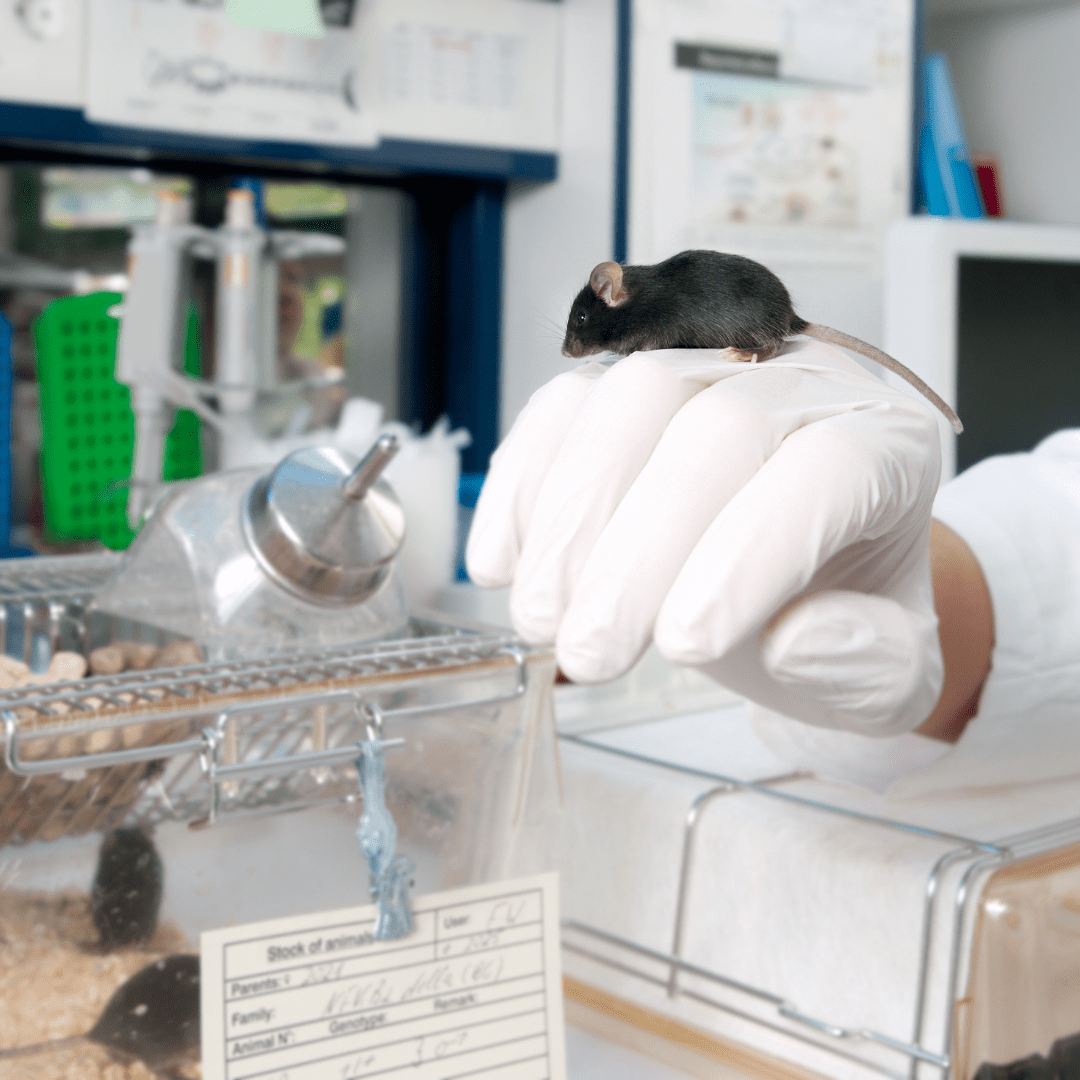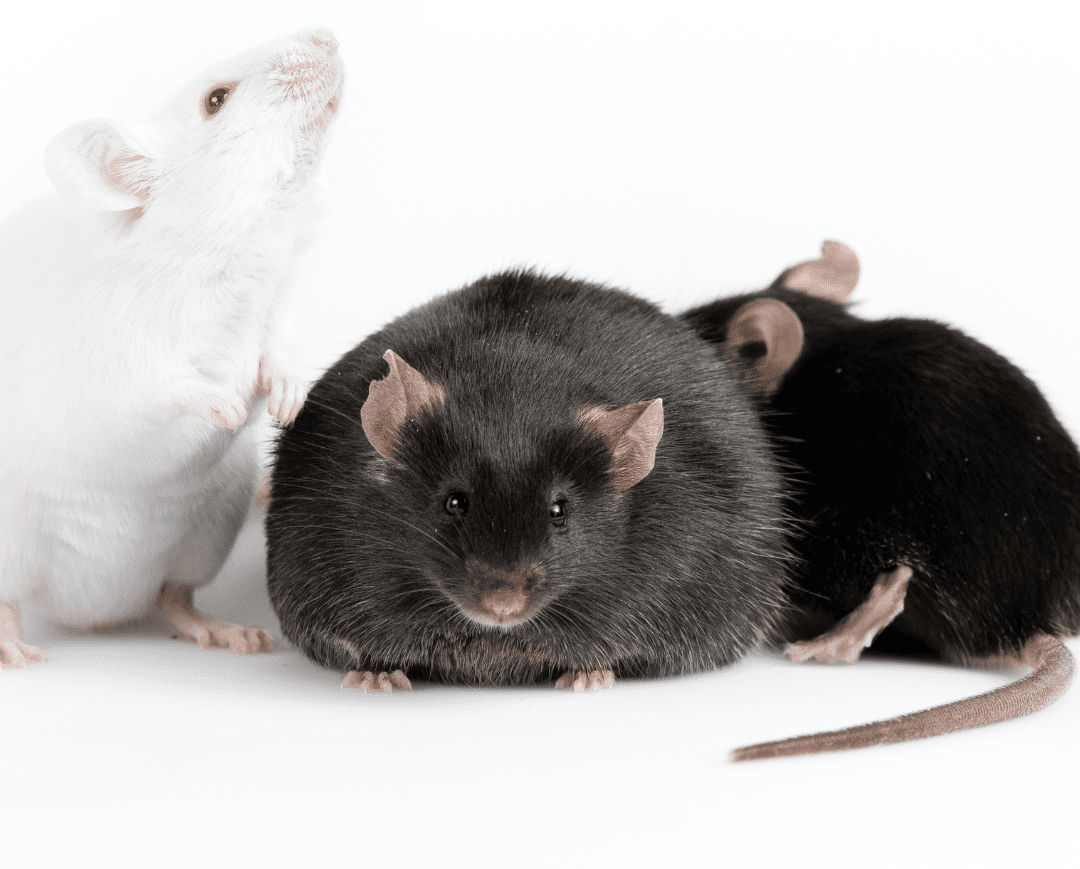Humanised mice
Humanised mice
Humanised mice
Why use humanised mice? There are many differences in the genotype, overall physiology and immune system between mice and humans. Studies performed in mice may not translate well to the human context or may not be possible to perform at all. In order to better study human physiology and pathologies, it may be advantageous to generate humanised mice that better model the human biological context.

What is meant by the term ‘humanised mice”? Broadly speaking, the term refers to mice that contain something human. Due to the diversity of potential ‘somethings’ and the diversity of their potential application to biological and medical research, the term is arguably too generic to be informative. That said, there are typically two different types of humanised mice; firstly, mice that are xenotransplanted with human cells or tissues, and secondly, mice that have had their genome modified in order introduce human genetic sequence to some extent. There are overlaps between these two categories in instances where genetic modifications are introduced for the expression of human factors that support the xenograft.
Xenograft humanised mice
In order to generate mice that contain human cells or tissues it was first necessary to develop mice that were immunocompromised so that the introduced human cells or tissue would not be acutely rejected by the murine immune system. Consequently, a range of immunocompromised mice, which contain defects in one or more components of the immune system due to the presence of genetic mutations or modifications have been developed over decades as hosts for the human xenograft. Newer lines may additionally contain human transgenes that secrete factors necessary to support the development, differentiation, or tolerance of the xenograft.
A commonly referenced standard is the NSG (NOD, scid, gamma) line that is severely immune compromised. NSG mice lack the adaptive branch of the immune system and have a repressed innate immune system due to the absence of dendritic and NK cells. This strain is on the NOD (non-obese diabetic) background which during development acquired several spontaneous mutations so that, whilst also serving as a model for type I diabetes, it has a repertoire of immune defects. These mutations include reduced IL-2 activity due to a mutation in the Il-2 gene, the initiation of autoimmune disease linked to a specific MHC haplotype, and a lack of complement system function caused by a knockout in the Hc gene. Breeding of NOD to C.B-17-scid introduced the scid (severe combined immunodeficiency) mutation present in the Prkdc gene that leads to a defect in V(D)J recombination resulting in the absence of functional T and B cells. The resulting NOD-scid was then crossed to mice containing a targeted deletion of the Il2rg gene. This gamma mutation ensures the absence of NK cells in the NSG line. A selection of immune compromised lines, including NSG, are commercially available through Ozgene ARC.

As there are many differences in the immune system between mice and humans, a common application for these immunocompromised lines is the engraftment of human hemopoietic cells for the generation of humanised mice whose immune cells are of human origin. These cells can commonly be sourced from either human peripheral blood monocular cells (PBMC), or hematopoietic stem cells (HSC). Mice may be subjected to sub-lethal irradiation prior to xenotransplantation to deplete host stem cells and improve engraftment. Engrafted cells migrate to the bone marrow compartment where they divide and differentiate into the different cell lineages of the immune system which then migrate into the periphery. Depending on the immunocompromised line utilised, graft versus host disease (GvHD) may result in the rejection of the xenograft due to human T cells being activated against murine MHC class I and MHC class II molecules. Such engraftments can also be combined with tumour or tissue engraftments such as patient-derived xenografts. It is therefore possible to tailor an array of models for specific research proposes. The resulting animals are valuable tools for studying the efficacy of immune therapies such as immuno-suppressive therapies, immuno-oncology, and infectious disease research.
Aside from the generation of humanised immune system mice, immunocompromised mice serve as platforms for the xenotransplantation of other human derived cells and tissues, including tumours, for the study of not only human immunity but also human metabolism, disease, and malignancies.
Genomically humanised mice
The term humanised mice may also refer to a mouse line that contains human genomic sequence. This could be something as simple as the introduction of a point mutation that is orthologous to a human disease-causing mutation, or more complex, such as mice in which an entire mouse gene is replaced with a human gene. Genomically humanised mice contain not only the desired human genetic sequence but are also capable of expressing the human gene product. The generation of genomically humanised mice can be achieved by several different approaches via gene editing or gene targeting technologies. It could be achieved by the introduction of the coding sequence, or cDNA, of a human gene into a mouse gene, the replacement of a portion of a mouse gene that encodes a protein domain of interest, the replacement of an entire gene including the proximal regulatory sequence such as the promoter, or a combination of approaches. The targeted introduction of large genomic sequence (>15kb) into the mouse genome remains technically challenging and cannot currently be achieved with standard CRISPR-cas9-based genome editing technologies. Our OzBIG approach for genomic humanisations is able to make large human genomic knock-ins of up to 240kb.
Genomically humanised mice are required in instances where gene therapy approaches target sequence that is not present, or not conserved, within the murine genome and also when therapeutic agent, such as an anybody, is specific for the human, and not murine, target. An example of a humanisation performed by Ozgene is the humanisation of the MHC class II molecule (Dewan et al. 2021). The major histocompatibility complex (MHC) displays antigens on the surface of antigen presenting cells for the activation of T cells via the T cell receptor. Variants of the MHC class II molecule have been implicated in multiple auto immune disorders including celiac disease. We generated a mouse line in which the only functional MHC class II molecule was a specific human haplotype. This was achieved by introducing human genomic sequence into the H2-Aa gene encoding the antigen A alpha chain and the H2-Ab1 gene encoding the beta chain. Splenocytes from animals that were homozygous for both knock-ins showed expression of the human and not the murine MHC class II molecule in FACs analysis. This model has been used in studies elucidating the role of MHC class II in the aetiology of celiac disease.
If you are looking for immune compromised mice as a platform for your research or to generate genomically humanised mice for preclinical studies talk to us.
Further Reading
- Comparing Immune-Humanized Platforms: Which One Is Best for My Application? 2023. https://resources.jax.org/jax-on-demand/comparing-immune-humanized-platforms-which-one-is-best-for-myapplication.
- Dewan, Alisa E., Frank Koentgen, Marie K. Johannesen, M. Fleur du Pre, and Ludvig M. Sollid. 2021. “Generation of an HLA-DQ2.5 Knock-In Mouse.” ImmunoHorizons 5 (1): 25–32. https://doi.org/10.4049/immunohorizons.2000107.
- Stripecke, Renata, Christian Münz, Jan Jacob Schuringa, Karl‐Dimiter Bissig, Brian Soper, Terrence Meeham, Li‐Chin Yao, et al. 2020. “Innovations, Challenges, and Minimal Information for Standardization of Humanized Mice.” EMBO Molecular Medicine 12 (7): e8662. https://doi.org/10.15252/emmm.201708662.
- Walsh, Nicole C., Laurie L. Kenney, Sonal Jangalwe, Ken-Edwin Aryee, Dale L. Greiner, Michael A. Brehm, and Leonard D. Shultz. 2017. “Humanized Mouse Models of Clinical Disease.” Annual Review of Pathology 12 (January):187–215. https://doi.org/10.1146/annurev-pathol-052016-100332.
- Yong, Kylie Su Mei, Zhisheng Her, and Qingfeng Chen. 2018. “Humanized Mice as Unique Tools for Human-Specific Studies.” Archivum Immunologiae et Therapiae Experimentalis 66 (4): 245–66. https://doi.org/10.1007/s00005-018-0506-x.
- Zhu, Fei, Remya R. Nair, Elizabeth M. C. Fisher, and Thomas J. Cunningham. 2019. “Humanising the Mouse Genome Piece by Piece.” Nature Communications 10 (1): 1845. https://doi.org/10.1038/s41467-019-09716-7.

